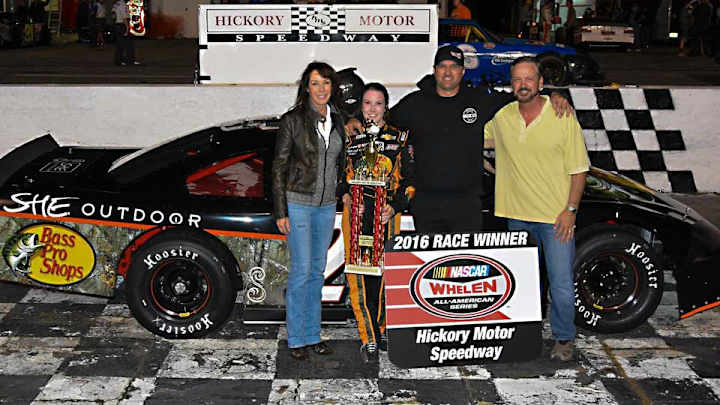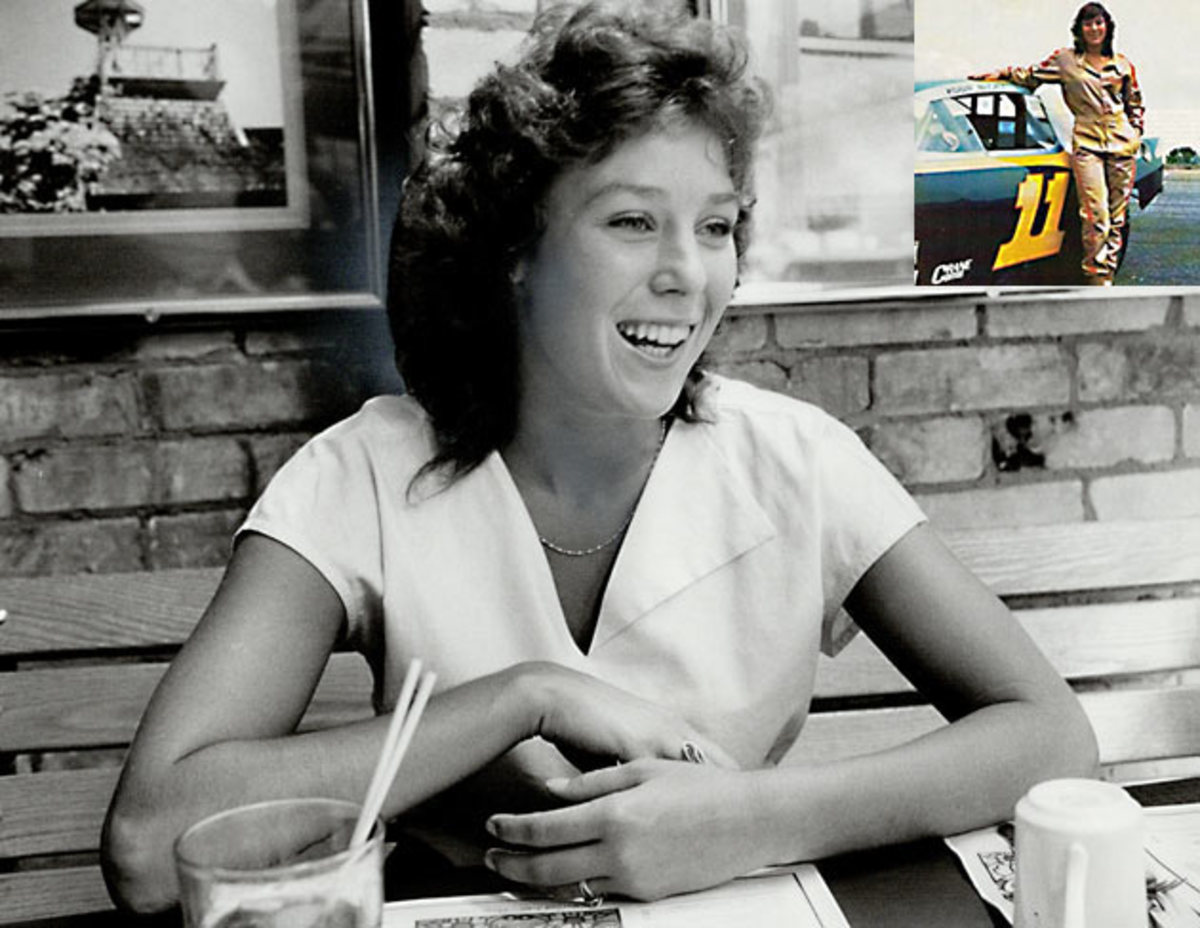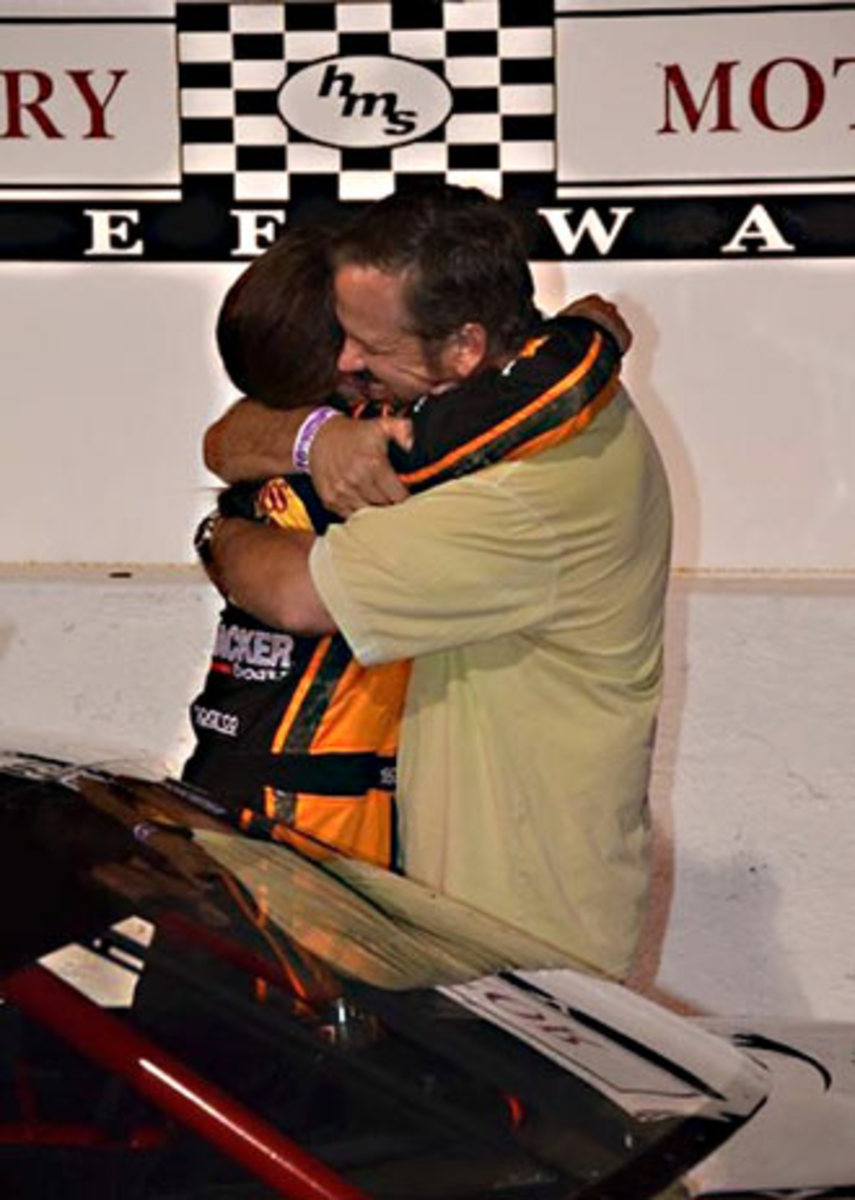Robin Dallenbach's NASCAR legacy rolls on with daughter Kate

Get all of Andrew Lawrence’s columns as soon as they’re published. Download the new Sports Illustrated app (iOS or Android) and personalize your experience by following your favorite teams and SI writers.
Mother’s Day came early for Robin Dallenbach, on a cool late-April evening at a short track in Hickory, N.C. It was there that her 19-year-old daughter, Kate, an up-and-coming late models driver for a Mooresville-based development team called Lee Faulk Racing, surprised her with an awesome gift—one that she’s been working on from the moment she started chasing the NASCAR dream 11 years ago. It all came together in a 100-lap feature, Kate’s first race of this season—a make or break one for her, you might say.
A strong, silent type of competitor, Kate has been circling the late models scene for the past two years now, ever since her family moved to Mooresville from San Antonio to give her budding career a boost. That’s not to say that it hasn’t been going along at a decent clip for Kate, who not only can claim sponsorship help from Bass Pro Shops, but also development support from Richard Childress’s powerhouse NASCAR team. It’s that she still has many, many more hearts and minds to win over to get to where she wants to go. “We knew that if we were gonna do this, we’d have to move and get in front of the NASCAR crowd,” says her father, Wally. “Everybody’s here. We needed to be able to showcase her talent in front of the right people.”
While Kate has enjoyed many successes during her way through the lower ranks and was even named rookie of the year after a second-place late models points finish at New Smyrna (Fla.), late models racing in North Carolina is a whole different ballgame, like high school football in Texas. NASCAR team owner and Pro Football Hall of Fame coach Joe Gibbs once told me, “It’s Friday and Saturday nights in small towns. You’ve got local heroes, and they go into these different places and work their way up. At some point a lot of ’em just don’t have the talent, can’t get it done and quit.”
Kate definitely has talent, comes by it naturally. Her grandfather, also named Wally, was a five-time open-wheel race winner and might’ve won the 1975 Indy 500 if his car hadn’t dropped a cylinder down the stretch. Her father has driven everything: stock cars, sports cars—still races sports cars when he’s not doing broadcast work at the track, actually.
But the real marvel in the Dallenbach family is Robin. She was going wheel-to-wheel with the boys—in late models, in sports cars, in NASCAR (where, as an 18-year-old in the early-80s, she became the youngest woman to qualify and race)—before women like IndyCar’s Sarah Fisher, NASCAR’s Danica Patrick, and F1’s Susie Wolff really started turning races into a girls’ club of sorts.
Of course, it wasn’t an easy ride for Robin, whose racing history is on display at the Henry Ford Museum in Detroit. “She told me one story where she was at a NASCAR race and at the time they didn’t let women into the garage,” Kate says. “She was actually racing in that race, and she had her driver’s suit on and everything. And they wouldn’t even let her in. She definitely got the worst of it.”
Even Robin’s relationship with Kate breaks the traditional mold—of a father and a son huddled around a race car, wrenches in hand, building and bonding away in the garage. Robin ferries Kate to her races, surveys them all from the pits. While Wally watches from the grandstand, or paces behind the grandstand if the action gets too tense, Robin looks on from on top of the team hauler with a radio hooked up to a headset so she can listen in on the chatter between Kate and Mike Faulk, Kate’s crew chief and spotter.
Kate gets her grit from Robin. She’s the person who tells Kate to not give up her line if another racer comes down on her going into a corner because “you own that piece of pavement.” And if Kate has to wreck that person to prove this point, as mom did back in the day, well so be it. When Kate did exactly that a couple years ago, while fighting for the lead during race in New Smyrna, Robin should’ve been beaming with pride. But she was livid, and perhaps rightly so. The guy in the other car was Kate’s older brother Jake.
“What were you two thinking?” Robin exclaimed.
“I just did what you told me to,” Kate shot back. “I owned that piece of pavement!”
Still, for all of her confidence, Kate has never felt especially possessive about Hickory Motor Speedway, a .363-mile oval with an exceptionally high learning curve. More than once, she’s been tempted to “never go back there again,” she says. “I’ve had some really, really bad luck there. Got wrecked by people so many times. It’s a really hard, really old track. But a lot of people say that if you can win at Hickory, you can win anywhere.”

Junior Johnson, Richard Petty and Dale Earnhardt Sr. are just a few who have cut their teeth there. Kate yearns to follow in their wake. So for the first time since her season ended five months ago, Kate climbed back inside her car, a black Chevrolet bearing the number 25, and tried yet again.
After qualifying fourth, she quickly moved up to third and hung back there for most of the race while the first and second position cars duked it out. Finally, around lap 95, they came together in a spectacular collision that yellow-flagged the race. When the smoke cleared, Kate was all alone up front, with a pack of snarling rivals just behind, and fighting her nerves like never before. Over the radio, Faulk, the crew chief and spotter, coached her up for the restart, urging her to “hit your marks, be smooth and don’t burn up your tires.”
She heeded those instructions when the green flag flew again, and was immediately struck in the left rear. She was pushed so hard that at least one of her rear wheels lost contact with the tarmac for two turns. Wally watched it all happen from the grandstand, his worst nightmare seemingly about to come true. “I was just waiting for her to get turned,” he says. “Like, OK, here it comes. Who’s gonna take her out?”
But sure enough, Kate owned her piece of payment and hung on to her Chevy until she had opened a gap that the field had no chance of closing. After a few more spins around, the checkered flag flew. And with that she had won her first late models race, at last. “That,” she says, “was pretty exciting.”

Her biggest supporters could hardly contain themselves. The first to greet her in victory lane was Faulk. After sprinting through the pits to Kate’s car, he gathered her up and twirled her in his arms. Next in the receiving line was Wally, who hugged her just as tight. Then came mom, prouder than any of us could truly know. Even the trophy presentation was too fitting. An eight-year-old boy was charged with the hand-off.
As for what happens next, well, that’s still to be determined. Kate has nine more races left, but this victory surely gives her and the boys back at the shop a major lift. (“It sets a really good attitude for us,” she says.) Beyond that, she’s working to earn a shot testing a truck, in hopes of scoring a ride in the Camping World truck series someday soon. Obviously, all of these long-term plans will depend on sponsorship support. Her parents, though, can afford to be more optimistic than most. “For a successful woman race car driver these days,” says Wally, “it’s a little bit easier to get some help.”
Still, there’s much to do—which is why the Dallenbachs didn’t spend too much time after the race celebrating Kate’s landmark achievement. Nothing ever comes easy in racing, after all. But at least Robin can see that the trail she blazed is truly making a difference.
